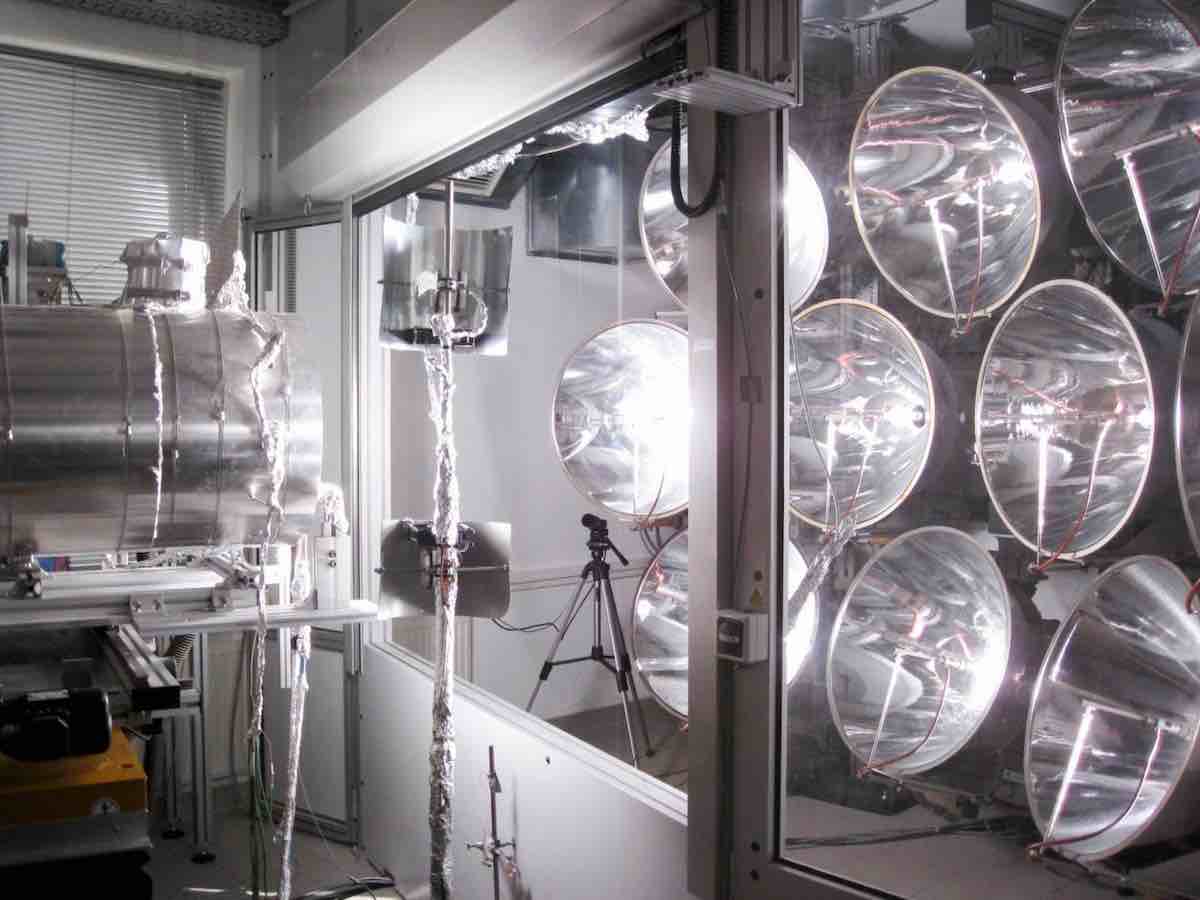This groundbreaking new facility in Germany is the future of alternative energy.
Researchers have successfully tested CONTISOL,: a solar reactor that is able to run on air and make solar fuel during the day and night.
Solar fuels, such as hydrogen, are fuels that are created without the climate-damaging carbon emissions that it takes to make hydrogen from natural gas today. This means that perfecting solar reactors is the key to a 100% clean energy future.
Instead of burning a fossil fuel for the heat needed to drive the thermal chemistry process of things like splitting H2 (hydrogen) from H2O, scientists have been testing various kinds of reactors that are heated by the thermal form of solar using mirrors to concentrate solar flux on a receiver.
RELATED: Woman’s Ingenious Invention Generates Electricity Using Wind From Trains, Subways
To attain zero-carbon heat for thermochemical reactions – which can operate at temperatures as high as 1,500º Celsius – experts view the direct heat of concentrated solar power (CSP) as a more efficient clean energy source than electricity from PV or wind.
There will be an unlimited supply of sunlight over the centuries, and no climate consequences when thermochemistry is driven by solar energy. The only disadvantage compared to burning fossil energy, is that the sun goes down at night.
Now, a group of scientists at the German Aerospace Center (DLR) have built and tested a new solar reactor design that includes storage so it can provide round-the-clock heat like the current fossil-fired method, but without the emissions.
Their paper, “Fabrication and testing of CONTISOL: A new receiver-reactor for day and night solar thermochemistry” was published in December 2017, at Applied Thermal Engineering.
MORE: Tesla to Turn 50,000 Homes Into ‘World’s Largest Virtual Power Plant’ – At No Cost to Owners
“Solar reactors in the past have had the problem of what you do at night when you don’t have sun, or even when clouds go by,” said the paper’s lead author, Justin Lapp, formerly of DLR, and now Assistant Professor of Mechanical Engineering at the University of Maine.
Lapp explained that when the temperature drops, the reaction could need to be halted or the flow rate of the reactants slowed, reducing the amount of products that you get out. If the reactor shuts down at night it cools off, not just wasting residual heat, but starting over from nothing next morning.
“So the main idea of CONTISOL was to build two reactors together,” he said. “One where sunlight is directly doing chemical processing. The other side for storing energy. In the chemical channels the high temperatures of the material drive the chemical reaction and you get a change from reactants to products within those channels, and in the air channels cooler air goes in the front and hotter air comes out the back.”
By combining storage capabilities with a direct solar thermochemical reactor, they get the best of both worlds, stable temperatures round the clock but also the most efficient heat source to perform reactions because it’s direct, so “you don’t have as many losses with multiple steps between the sunlight and the chemistry that’s happening.”
CHECK OUT: Transparent Cells Can Turn Any Glass Surface into Solar Panel, Even Car Windows
CONTISOL, which was tested in Cologne, Germany used air as the heat transfer medium because transferring the heat in air opens options for high efficiency storage systems like thermochemical storage or latent heat storage in copper or copper alloys which melt between 900 – 1100 C.
The advantages of air are that it is accessible, freely available and abundant. Air is not corrosive, and any leaks would be inconsequential, so it doesn’t need to be contained in a closed loop, he explained.
“It can pull air in just out of the atmosphere and then runs it through the heat exchanger to store the heat. And then it can vent that air out once it is cool.”
With other heat transfer materials, “you have to ensure the system is sealed everywhere and if you lose some you must buy more to make it up. With air you don’t have that problem.”
LOOK: Tesla’s Solar Roof May Actually Be Cheaper Than Your Own Roof
Unlike many heat transfer media, which can change their molecular structure at high temperatures, air remains stable at high temperatures.
However, an air receiver would seem to rule out chemical reactions using liquids like water. Not so, said Lapp.
“There are very few liquids that stay liquid in the 600 to 800 degree range that we are interested in,” he explained. “Most of the chemical reactions we deal with are either with gases like methane or with solid materials like metal oxide reactions.
Even splitting water is done at so high a temperature that water is not liquid, but steam.
“Water coming in already as steam makes it a lot easier to design the receiver. You don’t have the problems of steam expansion while its boiling. Its easier to keep it tight for steam than liquid,” he said. So to ready water for splitting, it would first be boiled to steam right in the tower.
(Source: SolarPACES)
Power Up With Positivity: Click To Share With Your Friends




















